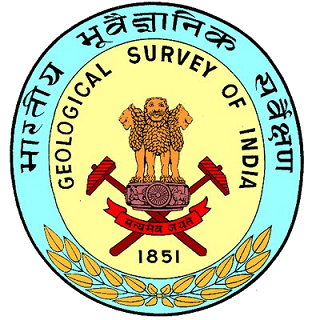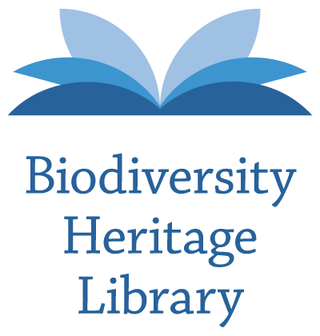
Friedrich Wilhelm Ludwig Leichhardt, known as Ludwig Leichhardt, was a German explorer and naturalist, most famous for his exploration of northern and central Australia.

Malacology is the branch of invertebrate zoology that deals with the study of the Mollusca, the second-largest phylum of animals in terms of described species after the arthropods. Mollusks include snails and slugs, clams, and cephalopods, along with numerous other kinds, many of which have shells. One division of malacology, conchology, is devoted to the study of mollusk shells. Malacology derives from Ancient Greek μαλακός (malakós) 'soft', and -λογία (-logía).

Sir Roderick Impey Murchison, 1st Baronet, was a Scottish geologist who served as director-general of the British Geological Survey from 1855 until his death in 1871. He is noted for investigating and describing the Silurian, Devonian and Permian systems.

John Obadiah Westwood was an English entomologist and archaeologist also noted for his artistic talents. He published several illustrated works on insects and antiquities. He was among the first entomologists with an academic position at Oxford University. He was a natural theologian, staunchly anti-Darwinian, and sometimes adopted a quinarian viewpoint. Although he never travelled widely, he described species from around the world on the basis of specimens, especially of the larger, curious, and colourful species, obtained by naturalists and collectors in England.

Ami Boué was a geologist of French Huguenot origin. Born at Hamburg he trained in Edinburgh and across Europe. He travelled across Europe, studying geology, as well as ethnology, and is considered to be among the first to produce a geological map of the world.

Richard Lydekker was an English naturalist, geologist and writer of numerous books on natural history.

The Gardeners' Chronicle was a British horticulture periodical. It lasted as a title in its own right for nearly 150 years and is still extant as part of the magazine Horticulture Week.

The Geological Survey of India (GSI) is a scientific agency of India. It was founded in 1851, as a Government of India organization under the Ministry of Mines, one of the oldest of such organisations in the world and the second oldest survey in India after Survey of India, for conducting geological surveys and studies of India, and also as the prime provider of basic earth science information to government, industry and general public, as well as the official participant in steel, coal, metals, cement, power industries and international geoscientific forums.

Thomas Rupert Jones FRS was a British geologist and palaeontologist.

William Thompson was an Irish naturalist celebrated for his founding studies of the natural history of Ireland, especially in ornithology and marine biology. Thompson published numerous notes on the distribution, breeding, eggs, habitat, song, plumage, behaviour, nesting and food of birds. These formed the basis of his four-volume The Natural History of Ireland, and were much used by contemporary and later authors such as Francis Orpen Morris.

Anne Pratt was a botanical and ornithological illustrator and author from Strood, Kent.
The Zoological Record (ZR) is an electronic index of zoological literature that also serves as the unofficial register of scientific names in zoology.

The Biodiversity Heritage Library (BHL) is the world’s largest open access digital library for biodiversity literature and archives. BHL operates as a worldwide consortium of natural history, botanical, research, and national libraries working together to address this challenge by digitizing the natural history literature held in their collections and making it freely available for open access as part of a global “biodiversity community.” The BHL consortium works with the international taxonomic community, publishers, bioinformaticians, and information technology professionals to develop tools and services to facilitate greater access, interoperability, and reuse of content and data. BHL provides a range of services, data exports, and APIs to allow users to download content, harvest source data files, and reuse materials for research purposes. Through taxonomic intelligence tools developed by Global Names Architecture, BHL indexes the taxonomic names throughout the collection, allowing researchers to locate publications about specific taxa. In partnership with the Internet Archive and through local digitization efforts, BHL's portal provides free access to hundreds of thousands of volumes, comprising over 59 million pages, from the 15th-21st centuries.
The Geological Magazine is a peer-reviewed scientific journal established in 1864, covering the earth sciences. It publishes original scientific research papers on geological topics. The journal is published bimonthly by Cambridge University Press.

Science-Gossip was the common name for two series of monthly popular-science magazines, that were published from 1865 to 1893 and from 1894 to 1902. The first series was called Hardwicke's Science-Gossip, and the second series Science-Gossip.

Edwin Tulley Newton was a British paleontologist.
Giovanni Giuseppe Bianconi, sometimes J. Josephi or Joseph Bianconi, was an Italian zoologist, herpetologist, botanist and geologist.

The Bristol Naturalists' Society is an organisation whose objectives include the promotion of the study of natural history, particularly that of the Bristol area, and the conservation of the fauna, flora, and geological sites of Britain. It was founded in 1862 and celebrated its 150th anniversary in 2012.
Proceedings of The Royal Society of Queensland is a multidisciplinary scientific journal published by The Royal Society of Queensland. It was established in 1884.
Richard Brinsley Hinds FRCS was a British naval surgeon, botanist and malacologist. He sailed on the 1835–42 voyage by HMS Sulphur to explore the Pacific Ocean, and edited the natural history reports of that expedition.















